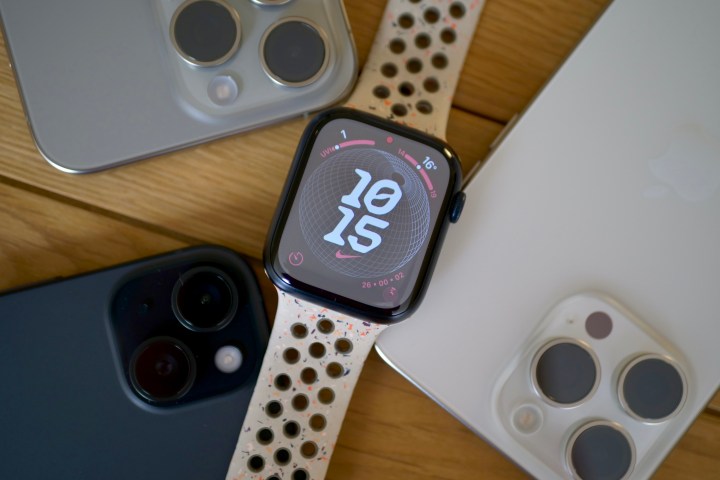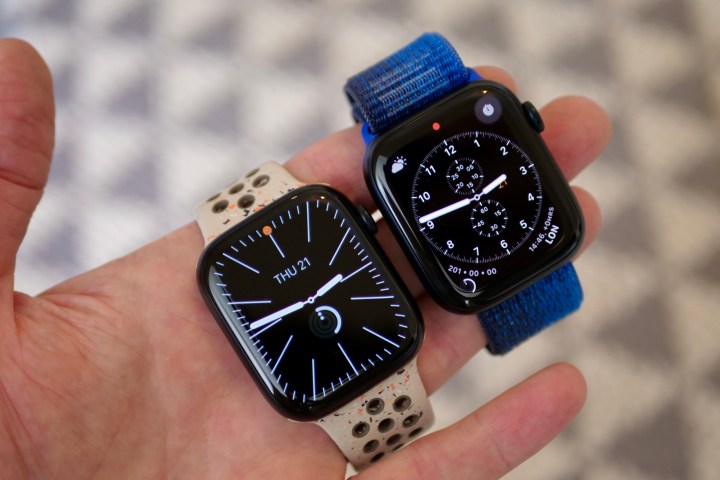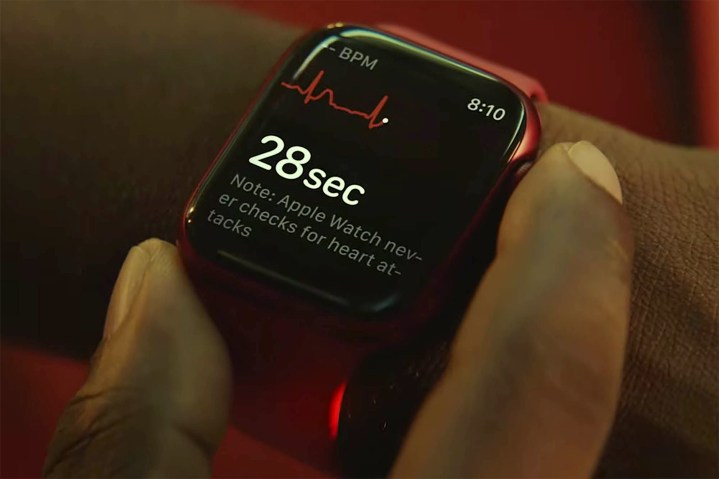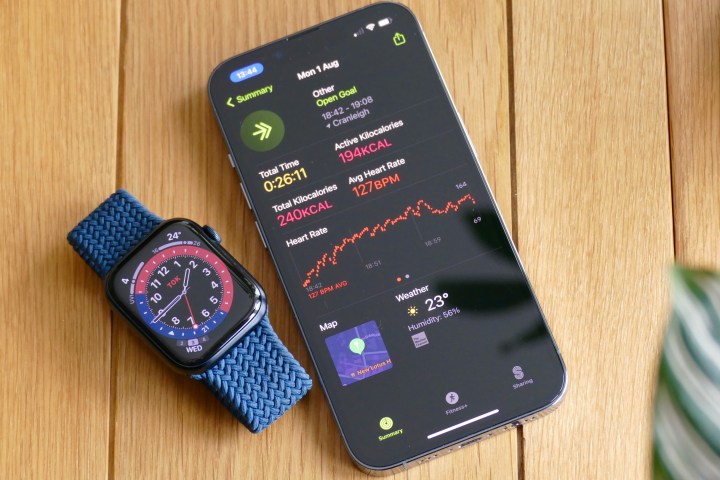
There’s something quite wonderful about smartwatches. As an Android aficionado, I have no shortage of great smartwatches to choose from. Watches from big names like Samsung and Google are in on the act with the Samsung Galaxy Watch 6 and Google Pixel Watch 2. I can also dip into fitness brands like Fitbit, Garmin, and even Polar. Heck, there are even options from traditional watch brands like Fossil and Casio.
So why is it that whenever Apple launches a new Apple Watch — like the new Apple Watch Series 9 — I feel the cold hand of envy on my shoulder? I have so many choices to pick from, and many of them are as good (and sometimes better) as the Apple Watch. But no matter how much I tell myself that, I feel the same tangled emotions every time Apple launches a new Watch.
Why does the Apple Watch have such a hold over me, and why won’t I just bite the bullet and get one? Well, it’s not because of the Apple Watch that I won’t — it’s because of the other hardware that Apple wants to saddle me with.
Why do I want an Apple Watch so badly?

Looking at pure features, the Apple Watch is nothing special. I can get most of the Apple Watch’s features on existing Android smartwatches. My Samsung Galaxy Watch 4 Classic is a top-tier smartwatch with great fitness elements. I have several Polar trackers that offer incredible fitness tracking and a long battery life. If I wanted something more stylish, I could go out and buy one of Fossil’s smartwatches. Really, the Apple Watch doesn’t offer anything I can’t get anywhere else.
Well, except for one thing: personal health and safety.
What I want from a smartwatch isn’t the joy of using a wrist-based computer; I don’t want to poke a watch for hours. I’m not much of a smartwatch user, really. I don’t use them to listen to music, I don’t like to reply to messages with them, I don’t call people on them, and I don’t even like receiving notifications on them. Skipping the occasional song is about as far as I’m likely to go.

For me, the perfect smartwatch is a health tracker that looks good. I like to keep track of my steps, exercises, my heart rate, and my stress levels. Relatives of mine have died due to heart-related issues, so I’m especially keen to keep track of any irregularities in my heart health that I might not notice. And it’s that nagging concern that pushes me toward the Apple Watch.
The Apple Watch doesn’t have a monopoly on health monitoring, though. Samsung’s smartwatches have had ECG sensors for almost as long as Apple and many other smartwatches and fitness trackers will notice if it seems like your ol’ ticker isn’t tickin’ so good. So, why not just buy another smartwatch and be done with it? Well, Apple’s genius isn’t necessarily what it’s added; it’s how strongly it’s communicated it cares.
Before the latest Apple Watch was announced, Apple debuted a simple video. Titled “Another Birthday“, it centered around people whose lives had been saved by their Apple Watches. Whether it was an irregular heart rate that led to vital surgery, the Emergency SOS feature, or Crash Detection, these peoples’ Apple Watches had saved their lives. And here was Apple, celebrating those lives. Yes, it’s marketing, and yes, it’s intentionally tugging on my heartstrings — but I don’t care. Like its ecological stance, Apple’s continued work here seems to highlight that it does care. And because I feel like it cares, I’d rather trust it with my health over a company that includes the same features but doesn’t seem like it cares.
But no matter how much I really, really want an Apple Watch, there’s a serious problem standing in my way; you might have guessed what it is. Just as much as I want an Apple Watch, I don’t want to use an iPhone.
The iPhone requirement is a problem

To use an Apple Watch, you have to use an iPhone. That’s the long and the short of it. Because Apple’s a big meanie, it won’t let an Apple Watch play nice with an Android phone, even if I ask really nicely.
Apple fans out there won’t see the problem here, and I envy you. I’ve been a true-blue Android fan since my very first smartphone, and at no point did I ever consider buying and using an iPhone. Even after having used an iPhone for an admittedly short period of time, I can categorically say I do not want to lean on an iPhone as my daily driver.
It’s not because of any sort of tribal loyalties; it’s because iOS is, well, different. But more importantly, it’s also wrong. Check out notifications, for instance. I’ve owned an iPad for well over five years now, and I still don’t understand how the notification area works. Because it doesn’t. Even after Apple “fixed” it, er, no, it didn’t.
I thought the App Library might take away another of my bugbears — but no, that’s terrible too. It’s an automatically sorted system of folders, and I have no idea where on this Windows Explorer-esque hellscape I’m supposed to find anything. Don’t even get me started on how bad the Control Center is. It’s not hard to get these elements working well: just take whatever Android has been doing for the last decade and copy it. At this point, it just seems like Apple is making areas of its software bad because it can’t bear to ape Android.

All of this wouldn’t be an issue if I could just tweak it and make it my own. But I can’t do that either. Apple has eased up on some of its control issues, but it’s still the most possessive of the big mobile brands by a long shot. “You want to what? Change how many app icons you can fit on your screen? You want a 5×5 grid square? Absolutely not, I don’t care what Uncle Android lets you do; you’re not doing that on my home screen.”
Every time I use an iPhone, I’m reminded that it’s not my phone; it’s Apple’s. And I should be jolly glad that Apple knows what’s best for me.
Of course, this comes with its downfalls too. Fun Uncle Android might let me do what I want most of the time, but he’s a bit of a wild spirit, as my struggles with the Pixel 7 Pro have shown. At least Auntie Apple is reliable, if boring. But ultimately, when it comes to my smartphone, I want to make it my own and have those customization options, even if it means that it sometimes crashes. But upsettingly, I want the exact opposite for my smartwatch. I want something that hums away in the background and just … works. And that’s where, as we all know, Apple excels.
So what is a boy to do, torn between two camps? There is a way around this, but I’m somewhat hesitant to do it.
There’s a way around this

There’s a simple solution. I could buy an LTE-connected Apple Watch and set it up on my work iPhone, and then just … walk away, clutching my Android phone and cackling like a madman. After all, the Apple Watch doesn’t need an iPhone to function; it only needs the iPhone for the initial setup. A-ha, Auntie Apple, I’ve outsmarted you!
Only I haven’t really. While the Apple Watch will be largely independent from the iPhone, there will be certain times I’ll need to go back. Updates, for instance, or whenever I want to really drill down into my health and fitness stats. And ultimately, that’s what really puts me off the idea. While it might be a fun experiment for a while, and one I’m more than willing to test out, it’s such an inelegant solution that I can’t feel like it would be one I’d roll with for a long time.
Until then, I’ll continue to pine for my lost love that never was. Who watches the watches? At the moment, it’s me.


